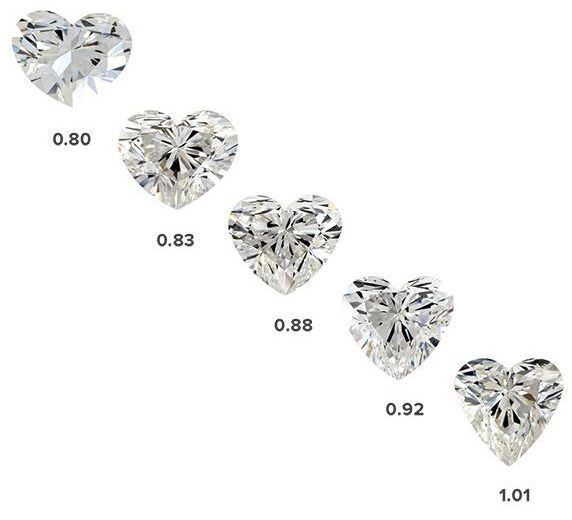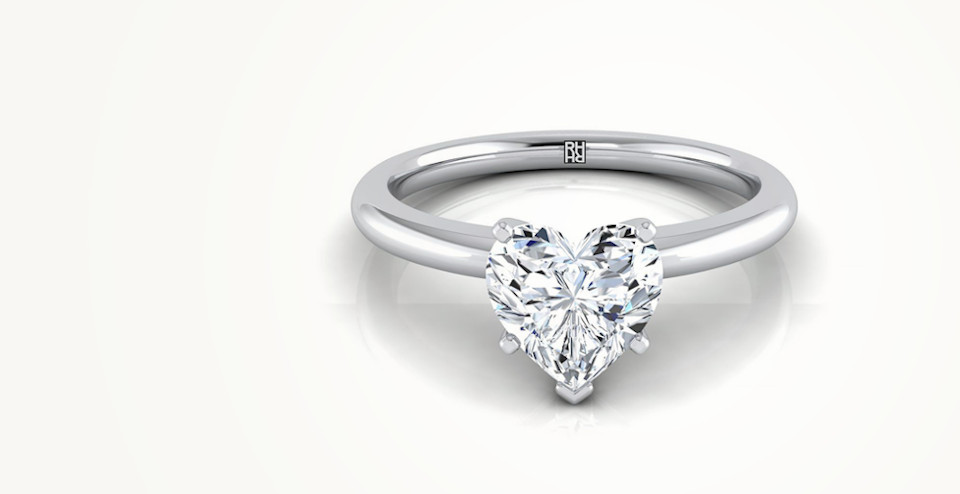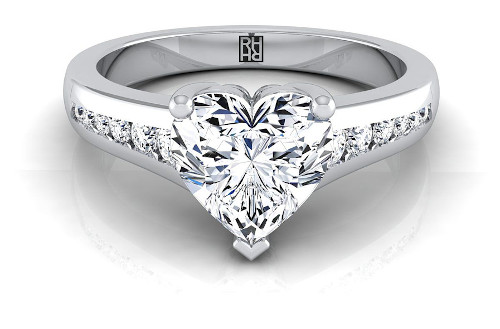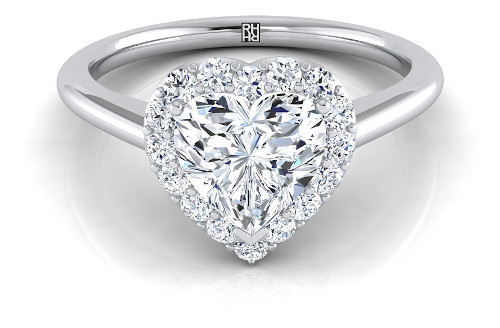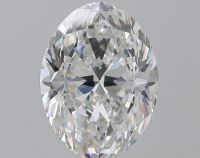And there’s one more thing we love about heart shaped diamonds. Despite how difficult they are to produce, they are about 25 percent less expensive than round brilliant diamonds of the same size and quality.

BUYER'S GUIDE TO HEART SHAPED DIAMONDS

The heart shape diamond first enters history in a letter written in 1463 by the Duke of Milan, Galeazzo Maria Sforza. He describes a heart shape diamond as a rare treasure only the most determined seekers can possess.
In 1458, a Flemish diamond cutter named Lodewyk van Berquem had just discovered that he could cut diamonds with more precision than even before by grinding them with diamond dust. He soon cut the first pear-shaped diamond. The stage was set for the first heart diamond cut: a wide pear shape with the addition of the cleft indentation of the heart.
Less than a century later, Queen Elizabeth sent Mary Queen of Scots a heart shape diamond as a gift of friendship.
Heart Shape Diamond Quality Checklist
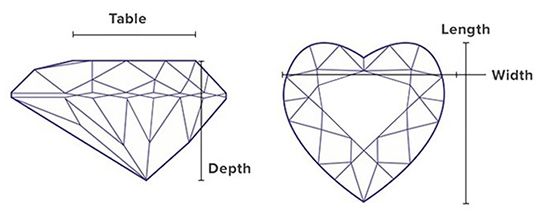
Heart shaped diamonds are the most difficult of all diamond shapes to buy too. Why is that? Think about the complexity of the shape: the cutter needs to beautifully curve the sides, create graceful and symmetrical lobes and then a deep (but not too deep) cleft. The outline of each heart is slightly different and there are a lot of things that can go wrong. That’s why you’ll have to look at a lot of heart shaped diamonds before you find one that is the perfect shape.

Antique heart-shaped diamonds have almost no clefts. The Queen’s Heart, Marie Antoinette’s 5.34-carat blue diamond, is more like a pear shape than a heart.
The famous Blue Heart Diamond in the Smithsonian Institution, cut in 1910, also has a very shallow cleft. So does Queen Elizabeth’s Cullinan V, the heart shaped diamond cut from the world’s largest gem quality rough diamond in 1908.

vs Oval Diamonds

The two cuts that are most similar to a heart shaped diamond are the pear shaped diamond and the oval shaped diamond.
Pear shaped diamonds are as dramatic as heart shapes. They have a very similar shape except for the cleft but pear shapes are more elongated with a finger-lengthening effect. Unlike heart shapes, which have a top and bottom, pear shaped diamonds can be worn either with the point up or the point down.
The oval shape diamond has a similar elongated silhouette and shallower depth means it also looks larger on your finger than a heart shape or a round brilliant the same weight. It is much more symmetrical than the heart shape: it’s less dramatic and more quietly refined.
The modern heart shaped diamond is an achievement of the diamond cutter’s art: the perfect symbol of romance. While other fancy shapes go in and out of fashion, the heart remains a classic.
Although it’s sentimental and sweet, it’s often worn by strong willed women, from Queen Elizabeth to Elizabeth Taylor to Lady Gaga to Nikki Minaj, who wears a fancy yellow heart shape engagement ring.

Our customers’ favorite setting for heart engagement rings is an elegant heart shaped diamond solitaire with a diamond band. (Remember to look for a V-shaped prong to protect the point.) If you prefer a classic look, a heart halo engagement ring has extra diamonds and extra sparkle. Because the heart is so distinctive, it also is perfect set a simple solitaire engagement ring. The most popular three stone heart engagement rings have tapered baguettes on the sides. No matter which way you set your heart shaped diamond, unless it is surrounded by a halo, be sure to protect the point with a v-shaped prong.
Balancing quality factors with length to width radios and cut quality can be challenging. That’s why we created ROSI, an artificial intelligence personal shopping tool powered by IBM’s Watson: to sort through all the heart cut diamonds available on the market to find the best balance of quality and value for your budget. See the best heart shaped diamond for your budget.
ROSI generally recommends a color of H for a heart shaped diamond: J and lower colors will start to show noticeable color in the point of the heart. Clarity should be at least VS2.
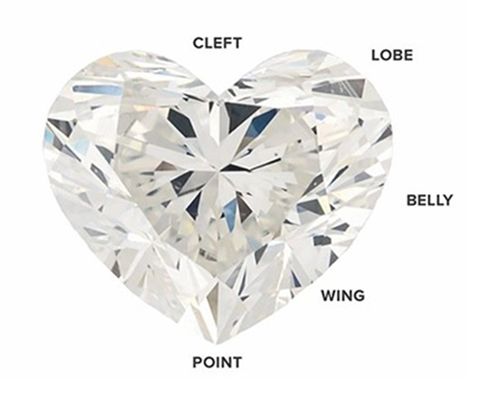
And there’s one more thing we love about heart shaped diamonds. Despite how difficult they are to produce, they are about 25 percent less expensive than round brilliant diamonds of the same size and quality.

The two halves of the heart should be perfect mirror images. The shape needs to be pleasing, with the lobes and cleft in proportion. All the sides should be gently curved, not flat. The center of the pavilion should be located in a pleasing spot so the radiating pattern of facets seems in balance.
Because heart diamonds are less common than round brilliants, many retailers won’t have any in stock. You are much better off buying fancy shapes like this online because you’ll have a much better selection in your target color, clarity and carat weight so you can assess the shape and cut quality and pick a really beautiful diamond that’s a good value too.
A ratio of 0.8 would be wide and a 1.1 would be taller and skinnier. Which you like best is a matter of personal taste but most people prefer something in the middle.
Many heart shaped diamonds have a darker area in the middle where the facets don't reflect as well. This optical effect is called the “bow-tie” effect because the dark area looks like two triangles corner to corner. Look for a heart shape that is brilliant even in the center area to make sure your heart-shaped diamond is beautiful in different lighting conditions.
